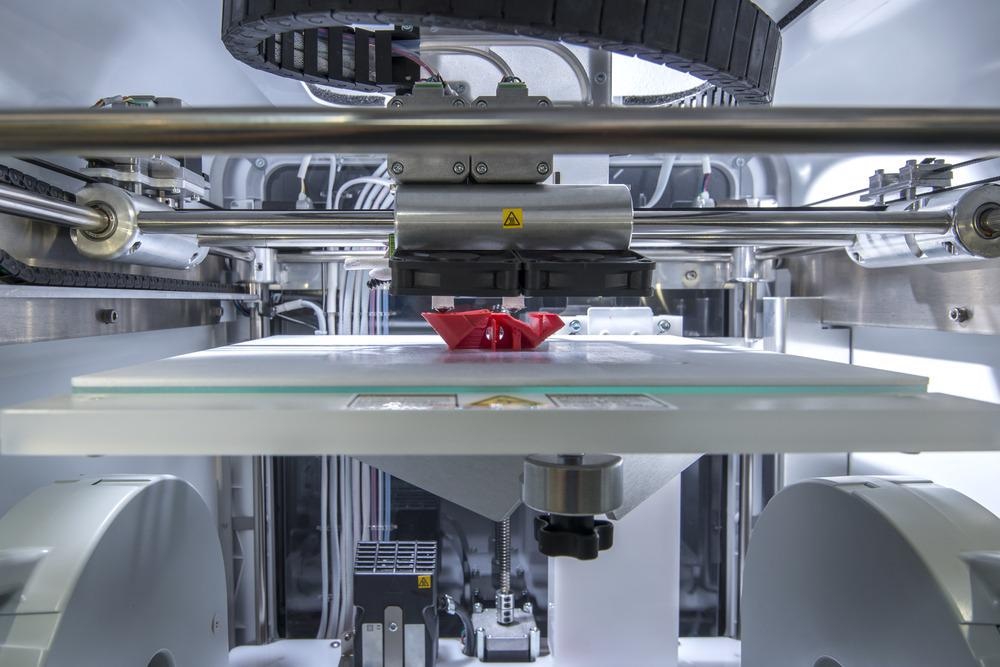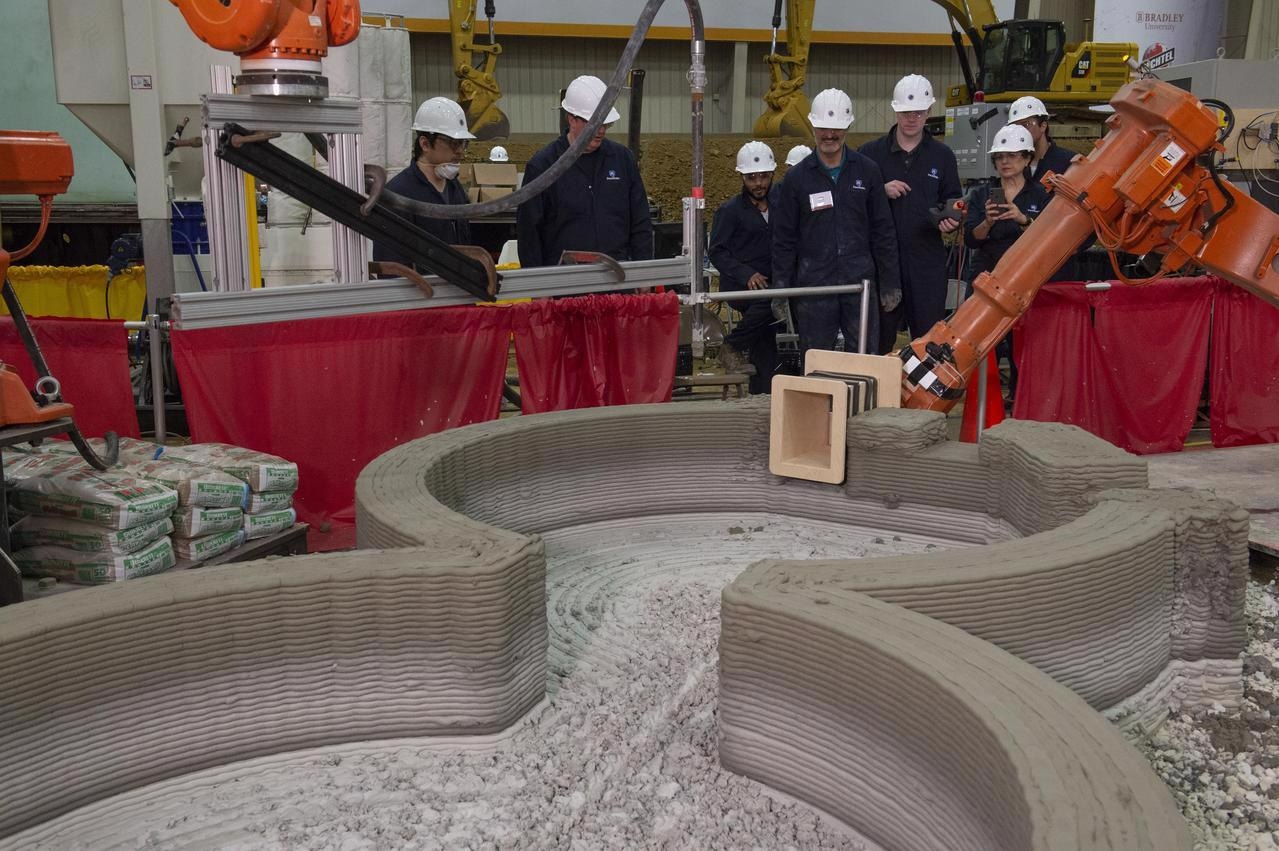Space exploration has been an extraordinary achievement of human ingenuity. Remarkable advancements in technology have allowed us to push the boundaries of space exploration continuously over the last several decades. Innovative three-dimensional (3D) printing technology has become an effective tool to manufacture equipment for space and in space.

Image Credit: RomboStudio/Shutterstock.com
3D printing is an additive manufacturing process. The primary objective of 3D printing is to create physical 3D objects by accurately following a digital design. Digital impressions are usually created using software like computer-aided design (CAD) or objects are scanned using a 3D scanner. Additive manufacturing is the process by which an object is built by layering materials precisely to the shapes delineated in the digital design. The layers can be in the form of liquid, metal, cement, or powdered plastic. Each layer is fused together to form the 3D object.
Traditional manufacturing methods require the use of several technologies to create objects. Different machining equipment and a series of molding, polishing, and adhesive apparatus are combined. 3D printing offers a more efficient and low-cost method of manufacturing as compared to traditional processes.
3D printing has become an invaluable cog in the equipment manufacturing process for space exploration. Various government and private organizations are heavily investing in developing apparatus for space use. Some objects are additively manufactured on earth and taken to space, while other materials are being 3D printed in space. For example, onboard the International Space Station (ISS).
3D Printing on Earth for Space Exploration
Additive manufacturing is increasingly used in manufacturing many components that are used in space. Private companies like SpaceX have been producing parts for their rockets using additive manufacturing since 2014. Many of the parts used in robotic vehicles surveying the surface of planets have also been built using 3D printers.
Thrusters, rocket engines, and fully functioning rockets can all be built using 3D printers. Additive manufacturing allows the manufacture of unique geometries that are lighter and cheaper. Furthermore, specific materials that have been proven to withstand space environments can be efficiently molded in 3D printing.
The Griffin Lunar Lander is equipped with thrusters that were 3D printed. Griffin is expected to carry equipment to explore the Moon’s South Pole in 2023.
Advanced combustion devices for rocket engines produced by 3D printers have also been shown to be 15% more efficient than their traditional counterparts.
A fully 3D printed reusable rocket is being developed in the US by Relativity Space, a new startup. Their Terran R project, expected to launch in 2024, is capable of carrying up to 20,000 kg into low Earth orbit.
3D printing is also used to make satellites. Smaller components that make up key functionalities within a satellite have been printed on 3D machines for many years. Well-known aerospace companies like Boeing and Airbus have implemented this method in their manufacturing process. Recent progress in satellite manufacturing aims to project fully 3D printed satellites into deep space.
Fabricating space suits is another application of 3D printing. For example, SpaceX uses 3D printing to produce apparel and helmets for their astronauts.
3D Printing in Space
Adapting from additive manufacturing on the surface of the Earth, many efforts are being undertaken to use 3D printing in microgravity environments in space.
Parts and small devices used in the maintenance and operation of the ISS are now being printed on board. These 3D printers are first tested on Earth before being transported to the ISS for further evaluation.
Exploring space to find human habitability has been ongoing since the first rocket landed on the Moon. 3D printed objects are playing a vital role in the quest to find environments in space that can sustain life.
In 2020, NASA launched the Perseverance Rover to Mars which had several tools built with additive manufacturing. Recently, various research efforts are focused on developing robots that are capable of tunneling under the surface of Mars. These robots are able to use 3D printing to build underground habitats suitable for potential colonization of Mars in the future.
Some research organizations are also investigating the possibility of 3D printing livable structures on the Moon. These projects are aiming to develop full-scale additive construction systems that can use loose rock, soil, and lunar regolith found on the surface of the moon to construct habitats.

Team Penn State prepares their 3D-printer to begin printing a subscale habitat structure at NASA's 3D-Printed Habitat Challenge, held at the Caterpillar Edwards Demonstration & Learning Center in Edwards, Illinois, May 1-4, 2019. The habitat print is the final level of the multi-phase competition, which began in in 2015. The 3D-Printed Habitat Challenge is a competition to create sustainable shelters suitable for the Moon, Mars or beyond using resources available on-site in these locations. The challenge is managed by NASA's Centennial Challenges program, and partner Bradley University of Peoria, Illinois. Image Credit: Emmett Given/NASA
Production and conservation of food in space is another challenge that 3D printing is positioned to solve. The aerospace industry is collaborating with food technology companies to find innovative methods to produce food in space. Initial efforts are attempting to 3D print meat onboard the ISS. Bovine cells are cultured in space after being harvested on Earth. This research initiative promises to enhance human nutrition in space.
Outlook
Future space missions stand to gain an enormous lift in operational functionality due to 3D Printing. In space, manufacturing will allow for space exploration to be independent of constant communication and intervention from Earth. Commercial space travel can be sped up with the flexibility offered by 3D printing.
More from AZoQuantum: First Image of the Milky Way’s Supermassive Black Hole Explained
References and Further Reading
All3DP. To Boldly Go Where 3D Printing Has Never Gone Before | 3D PRINTING IN SPACE. https://all3dp.com/2/3d-printing-in-space-projects/
Jamie, D. (January 27, 2022). What Are the Applications for 3D Printing in Space?| 3Dnatives. https://www.3dnatives.com/en/top-10-3d-printing-space/#!
Elizabeth, H. (June 30, 2021). New Relativity Space factory will host dozens of 3D printers for Terran rockets | Space.com. https://www.space.com/relativity-space-new-factory-terran-rocke
Disclaimer: The views expressed here are those of the author expressed in their private capacity and do not necessarily represent the views of AZoM.com Limited T/A AZoNetwork the owner and operator of this website. This disclaimer forms part of the Terms and conditions of use of this website.